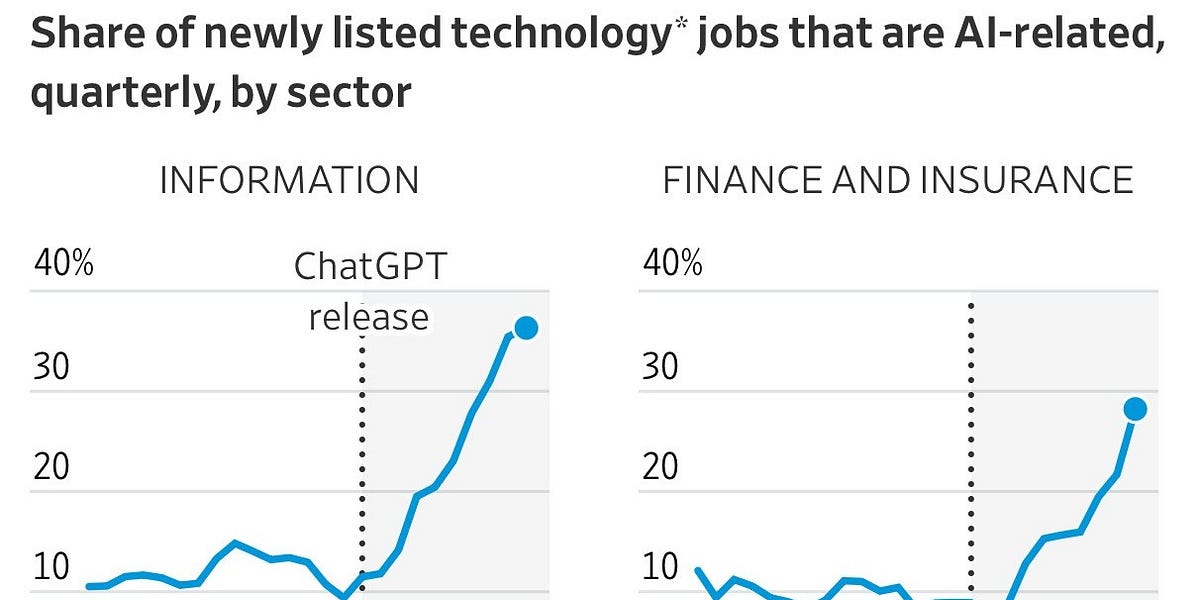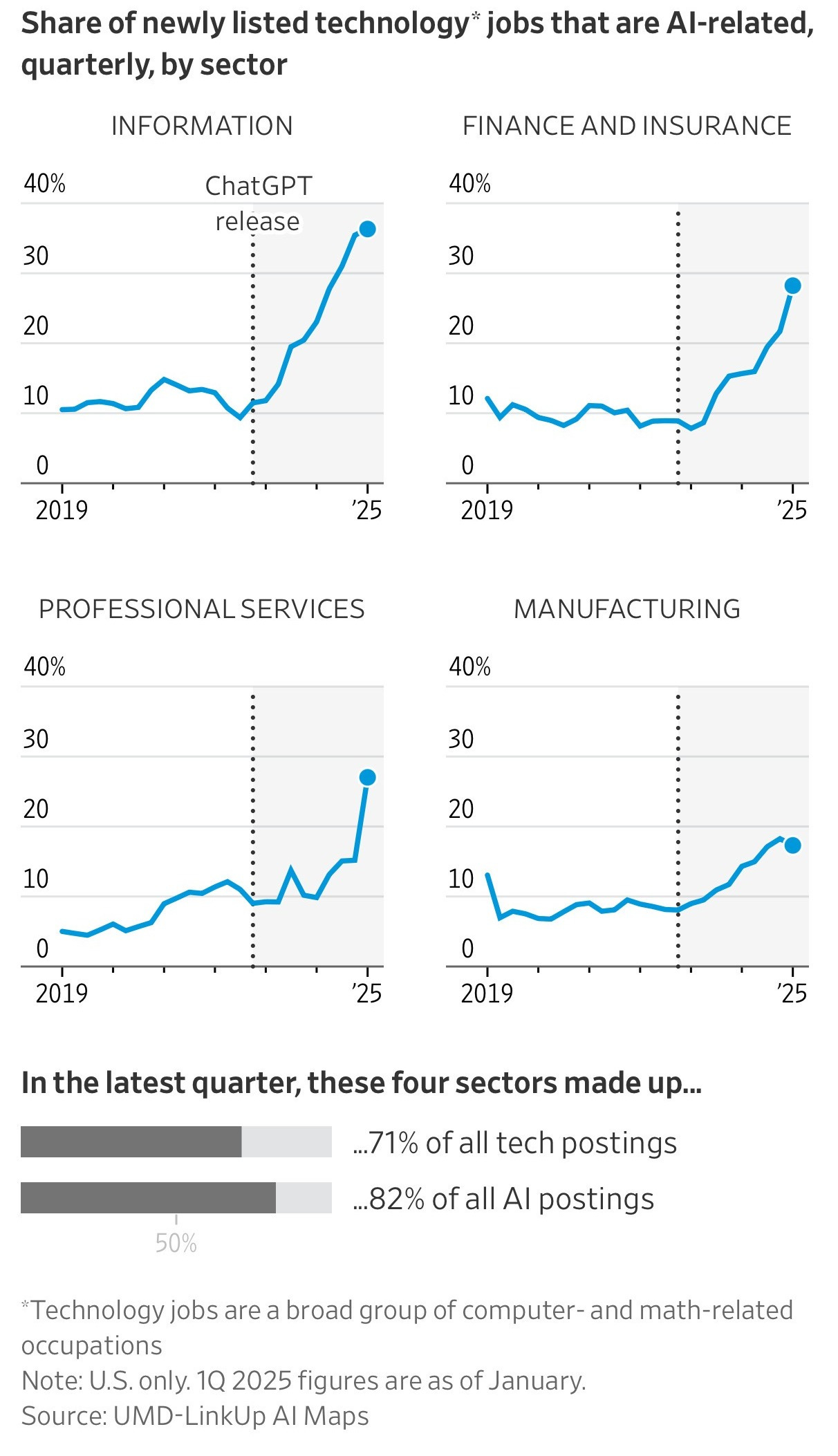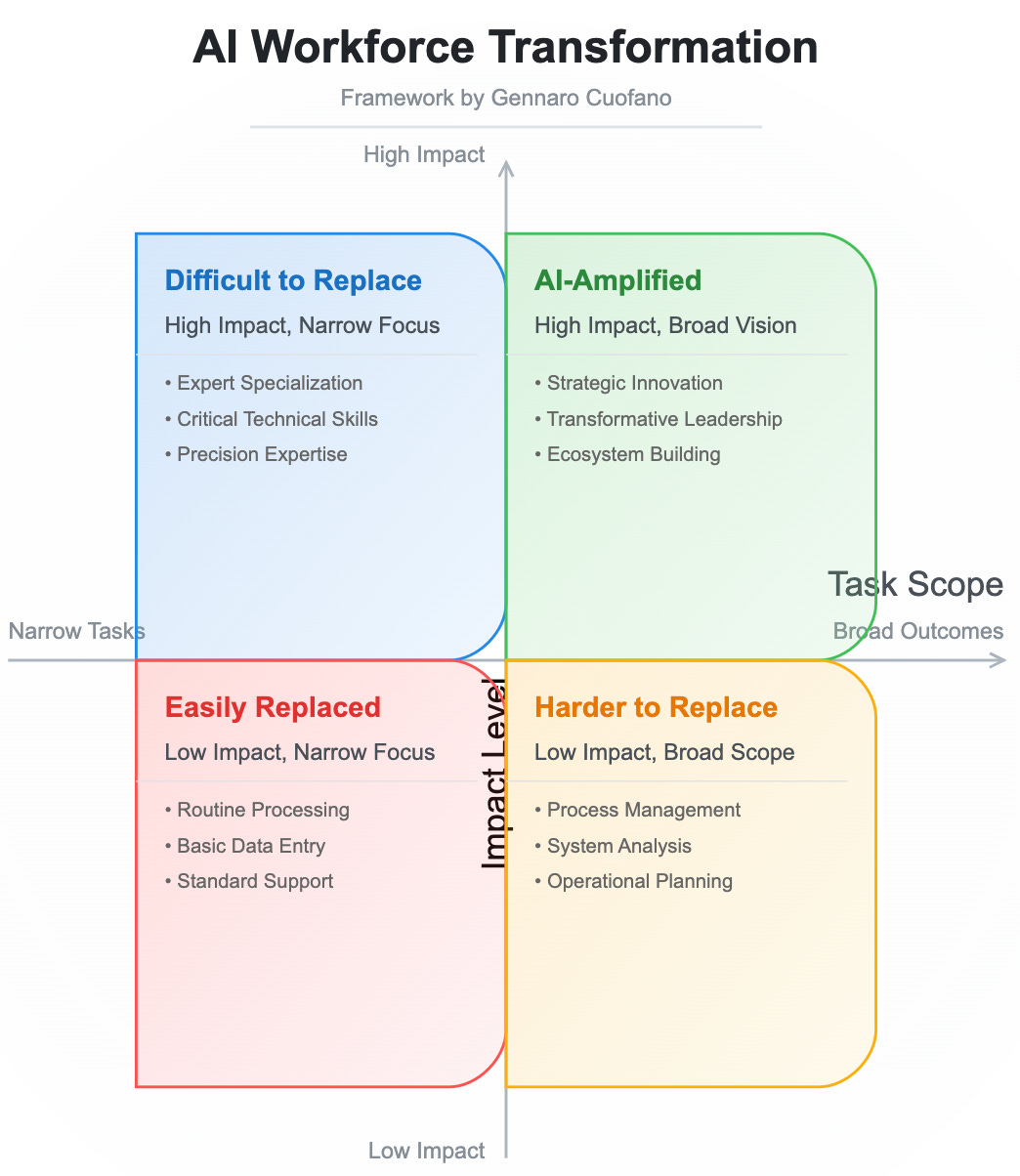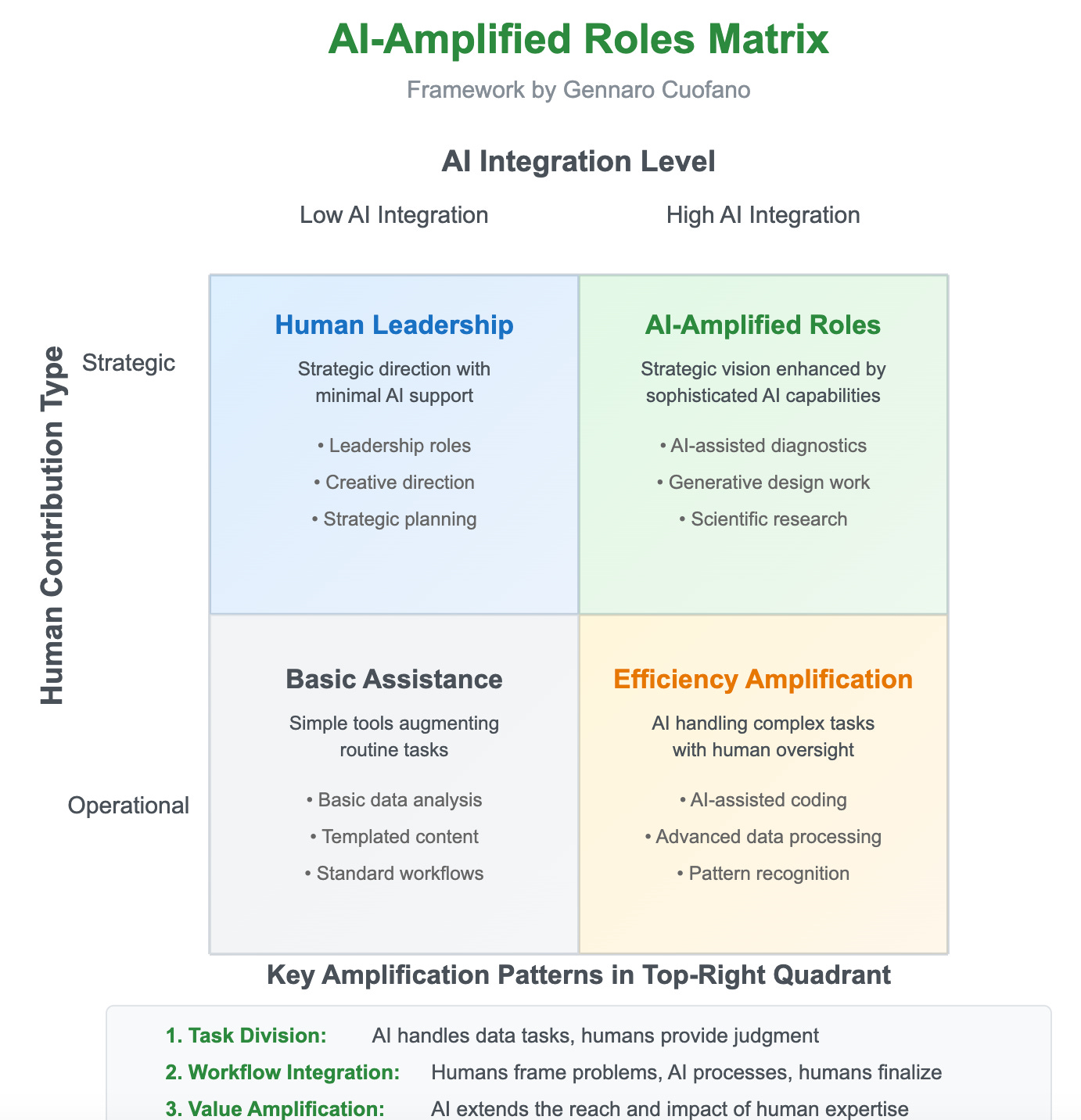
We got to the point where AI skills are now essential in tech hiring, with 1 in 4 U.S. tech jobs requiring AI expertise to make it through.
Major industries like finance, healthcare, and retail are integrating AI, driving demand, and making it part of their daily workflow.
AI job postings have surged by 68% since 2022, offering higher pay and job security and reshaping traditional IT roles across sectors.
That applies to many verticals.
I’ve been arguing since the “ChatGPT Moment” that in a world in which AI-enhanced humans would become a critical component of the workforce for the next 30-50 years, you, with AI, could go a long way.
Yet, the AI-driven job transformation might follow the 90/10 principle, or 90% of jobs might become replaceable, while 10% will be amplified.
In the short term, this might sound like a threat for many, and it is if you define your job as a “bundle of tasks” or, even worse, a “single narrow task.”
I’ve explained this well in the AI Impact Matrix.
There, I’ve broken down the quadrant into four core areas.
Characteristics:
-
Repetitive, standardized workflows.
-
Rule-based decision-making.
-
Minimal adaptability required.
Examples:
Automation Potential: High, easily automated with AI and robotic process automation (RPA).
Characteristics:
Examples:
-
Mid-Level Analysts.
-
Technical Operations.
-
Process Managers.
Automation Potential: Moderate, requires more advanced AI but still automatable.
Characteristics:
Examples:
Automation Potential: Low, resistant to full automation due to complexity and human oversight.
Characteristics:
-
Strategic thinking and leadership.
-
Requires innovation and adaptability.
-
AI acts as a force multiplier.
Examples:
Automation Potential: None; AI enhances human capabilities instead of replacing them.
Now, let’s move to the amplification side.
-
Strategic thinking and innovation – Requires vision, creativity, and complex decision-making.
-
Dynamic adaptation to change – Highly flexible roles that evolve with new challenges.
-
Human-centric leadership – Emphasizes emotional intelligence, influence, and collaboration.
-
Ecosystem-wide impact creation – Drives transformation across organizations, industries, or society.
-
Innovation Leaders – Individuals driving technological or business model evolution.
-
Strategic Visionaries – Experts shaping the future of industries or organizations.
-
Transformation Architects – Leaders orchestrating large-scale change and AI integration.
Or what I call business architects.
The best thing you can do to become extremely valuable in the future AI marketplace and move towards the impact side of the matrix is to refine your intuition.
And there is no shortcut to it as that is a deep experience or a sweet spot between just doing it, being there, observing, and deliberately analyzing/learning/observing/being in the flow.
Once you’ve done it repeatedly, that’ll come back as intuition. Or simply getting something out of the blue.
Or, it practically means unknowingly noticing subtle details and, from there, making a general inference about your context to understand where you are in the world and where the world is going.
That’s part of what it means to understand the grand strategy or the territory, but I’ll leave this up for one of the upcoming issues.
In the coming years, the key question to ask yourself is, “How do I position myself into the AI-amplified quadrant?”
Here’s how.










